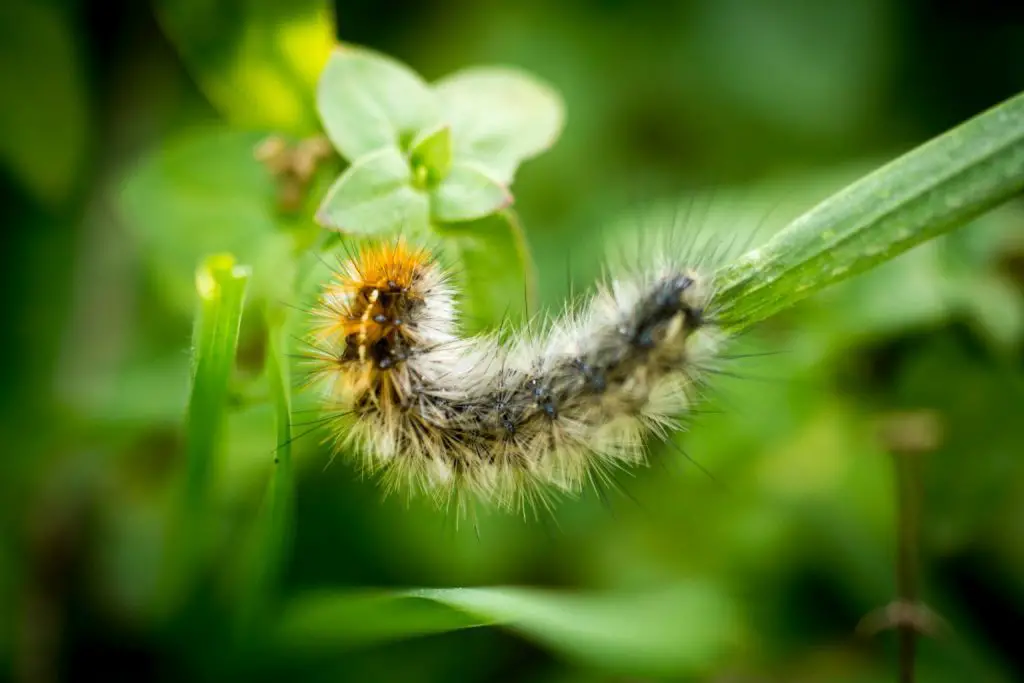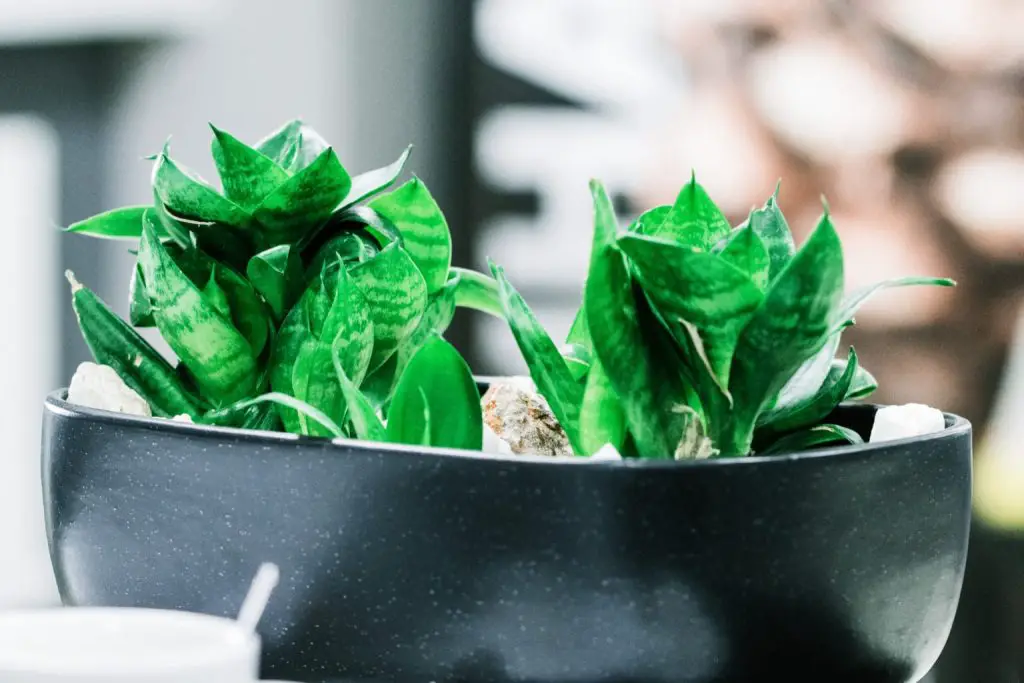Snake plant (botanical name Dracaena Trifasciata) is one of the most popular houseplants. It is also commonly known as Mother in law’s tongue or Viper’s bowstring hemp. This is a perennial succulent that is often kept in houses and office spaces for its gorgeous leaves. The plant is famous for its evergreen, upright leaves that look gorgeous throughout the year. The leaves have interesting patterns that somewhat resemble a snake’s skin, hence the common name. Snake plant is extremely tolerant of neglect and a wide range of environmental conditions, making it well-suited for beginning gardeners. Let’s see how you can care for your snake plant and provide it with a favorable growing environment.
Contents
At a Glance
| Common names | Snake plant, Mother-in-law’s tongue, Viper’s bowstring hemp |
| Botanical name | Sansevieria Trifasciata (now Dracaena Trifasciata) |
| Light requirement | Bright sun, Partial shade, low light conditions |
| Soil type | Fast-draining and porous |
| Soil pH | Ideal range 5.5 to 7.5 |
| Hardiness zones | 9 to 11 |
| Watering | Approximately once every 10 days during spring-summer, once a month in winter |
| Feeding | Low strength liquid fertilizer in growing season |
Although the term “snake plant” usually applies to Sansevieria Trifasciata, there are many varieties of Sansevieria that are commonly mentioned as snake plant or mother in law’s tongue. There are more than 70 different species that come under the genus Sansevieria. Apart from visual differences, many of these plants are similar in regards to ideal growing conditions. To learn about any specific plant species and its care, check out this list of Sansevieria varieties.
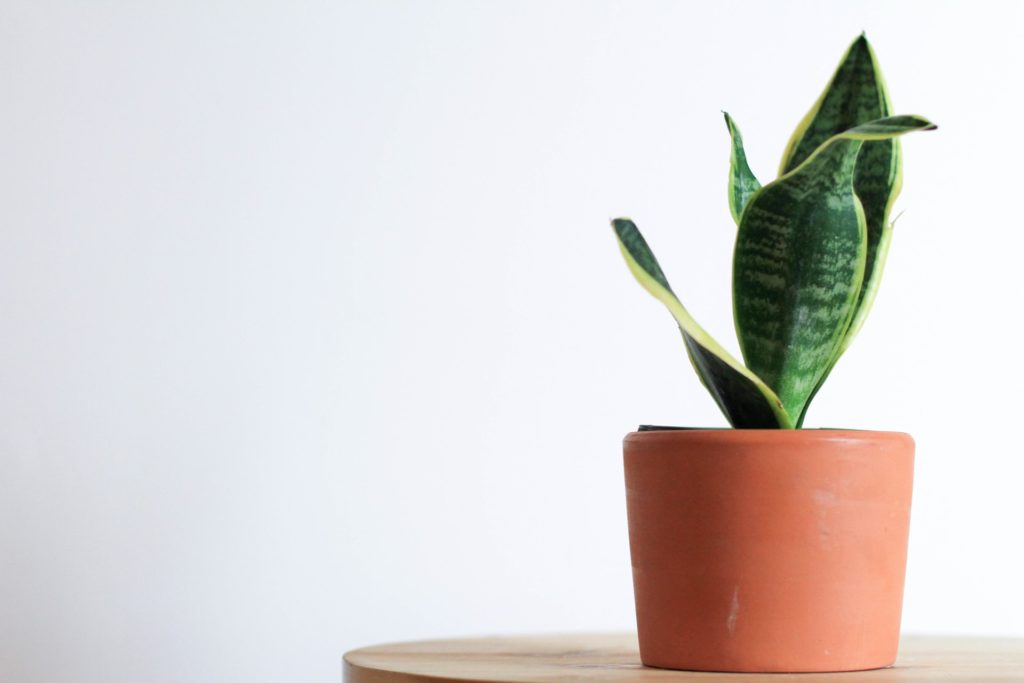
Snake Plant Size and Growth Rate
Sansevieria Trifasciata itself has many varieties and cultivars that come in many different shapes and sizes. There is popular Sansevieria Laurentii with yellow leaf borders, Sansevieria Cylindrica which has cylindrical leaves, and a dwarf cultivar Sansevieria Hahnii that is great as a tabletop decor. In general, depending on the variety, snake plants can attain the height of 6 inches to 6-7 feet. The plant leaves are fleshy, tough and mostly striped with shades of green and gray-green.
Mother in law’s tongue has a slow to medium growth rate. It grows well in small pots and doesn’t need to be repotted frequently. If you wish to maintain the plant size, pruning the plant every 2-3 years is necessary. Snake plants grow actively in warmer months of the year. During cold winters, they are in dormant state. Bright light and warm weather also encourages the plant to grow fast and bloom. It can produce creamy white flowers that open at night and have sweet fragrance.
Ideal Growing Conditions For Snake Plants
Snake plants are easy to grow and are nearly indestructible. It is great as a singular pot plant, excellent in a grouping and will grow equally well in the ground or on tabletop displays. These plants will thrive in both too bright areas and dark corners of the house. They are also very drought resistant and don’t require daily attention. Let’s see in detail the most favorable growing conditions for the Sansevieria plants.
Light Requirement
Snake plants are notorious for tolerating anything from the bright sunlight to low light conditions. In fact, they don’t even require sunlight. Research suggests that snake plants can grow under bright house lamps or LED bulbs as well.
So, practically you can place a snake plant almost anywhere in your home. An ideal environment for your plant is a brightly lit room. You can also keep the plant behind a sunny window covered by a sheer curtain. North or south facing windows are great choices. Few hours of direct sun won’t hurt your snake plant either, especially in the mornings and evenings. Make sure to rotate the pot so that all the sides get equal light. Do this couple of times a month.
However, avoid placing your plants in areas that are too dark. Extremely low light will change the color of leaves, fade the leaf pattern and stunt the plant growth. Similarly, protect the snake plant from harsh afternoon sunlight. It can also cause leaf discoloration and browning of leaf tips.

Watering Schedule
Snake plants originate from dry regions of Africa, therefore they’re very drought resistant. They don’t require frequent watering. In fact consistent wet roots is a very common reason for diseases in snake plants. It can cause yellow, mushy leaves, rot the plant roots and even kill the plant. To avoid these problems, follow a good and flexible watering regimen.
Normally, you can water your snake plant once a week or once in every two weeks. But it’s not a hard and fast rule. The important thing is to keep the soil on a drier side. A perfect watering frequency will depend on your plant size and environmental conditions. Cold, humid climates and low light conditions demand less watering. And if your plants are outside in a dry tropical area, you may need to water them more often.
Watering frequency should also change with the season. Make sure to reduce the watering when the temperature starts to drop. During the cold winter season, plants are resting. They don’t need much water and nutrients to grow. They can survive for 1-2 months before needing water again. Water just enough so that the soil doesn’t dry out completely and become rock solid. Here are some basic tips:
- The best way to decide if your snake plant needs water is to stick your finger in the soil and check the dampness. The top inch of soil should feel dry to touch. If it’s still a little moist, wait for a couple of days.
- It’s a common mistake to add just a bit of water because it’s a succulent plant. Thoroughly soak the soil until the water starts dripping from the drainage holes. For in-ground plants, water slowly to the depth of at least 4-6 inches.
- While watering, pour the water around the edges and not on the crown. Wipe off the leaves if there’s water in the grooves. Or let them dry with an air draft. It’s better to water your plant during daytime, so the extra water can evaporate easily.
- After that, let all the water drain away. You can do this over a sink, or collect the water in a drainage plate and throw it away.
You may want to read : Detailed watering guide for snake plants
Temperature
Being tropical plants, Mother in law’s tongue plants have excellent heat tolerance but they are not winter hardy. Temperature is not a major issue for indoor snake plants. If you feel comfortable with the temperature in your house, your plant is happy as well. Average room temperatures are optimal for the plant growth. Anywhere between 60-85°F (15-29°C) is considered an ideal temperature. Although snake plants can easily tolerate some fluctuations.
Snake plants cannot handle cold as well as they survive hot temperatures. If you keep the plants in a greenhouse, make sure to monitor the temperature during winters. Bring your outdoor plants inside for the winter. If the temperature is going to drop below 50°F (10°C), cover the plant with a heavy cloth. This will help to retain some warmth. Avoid frost on the leaves, because it can cause permanent leaf damage. Be mindful about watering if you get harsh winters in your region. Never water your snake plants during extremely cold winter nights. Wet soil combined with freezing cold can definitely kill your snake plant.
Click here to read more about ideal temperature, humidity and light conditions for snake plants.
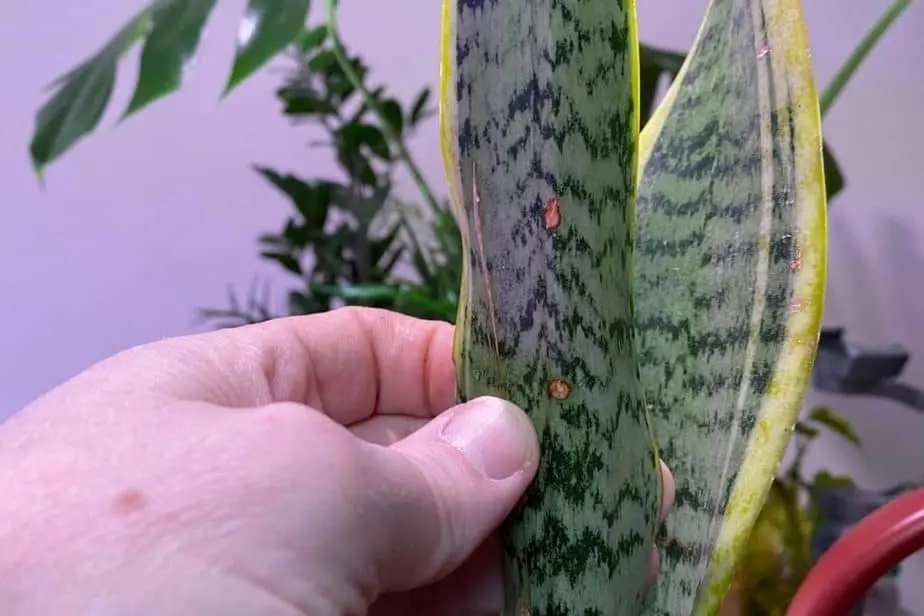
Soil Mix
One of the most common problems a snake plant can face is root rot caused by overwatering. When Sansevieria roots are soaked in water for too long, it causes dark rotting roots, mushy leaves and other problems. Wet, drenched soil also leads to fungal infestations over the period of time. That’s why it’s important to choose the right soil mix that can drain out enough water.
For snake plants, a coarser and well-draining medium is the best. Never use pure garden soil cause it can be too dense. Some of the best ingredients for a potting mix are pumice, perlite, sand, gravel, coco coir and peat. They retain just enough moisture needed for the plant while improving the drainage capacity of the mix. A simple combination is equal amounts of perlite and loam. Another hassle-free option is using a ready-to-use potting mix made for succulents and cacti.
A preferred pH range of the soil mix is 5.5 to 7.5, i.e. neutral to slightly acidic. However, a soil pH ranging between 4.5 to 8.5 suits well for most Sansevieria.
It’s also crucial to replace the soil whenever necessary. For instance, years of use can make the soil old, compressed and sticky. Some fungal infestations like southern blight can grow on the soil surface. Such soil, if reused, can contaminate a healthy plant. If you notice root rot in your snake plant, it’s better to replace the potting mix.
Pots and Planters
It’s always satisfying to pair a gorgeous snake plant with an equally beautiful pot. Getting a perfect container may not be the most important thing, but is definitely an added bonus. Before buying a pot, consider the features of your Sansevieria species, how tall it might grow, and does it spread out. Snake plants don’t grow very fast, so it’ll take them a long time to fill the container. Most snake plants need repotting every 2-3 years. But, choosing a container that’s too big can cause problems due to the extra soil and moisture. Select a pot that’s just a couple inches larger in diameter than the root ball size. Make sure it’s not too shallow, else a tall plant may topple it over due to the weight.
The most essential feature to look for in a container is drainage. If a pot doesn’t have drainage holes, drill some on the bottom. For plastic containers, you can use a hot nail to make drainage holes. Just be careful not to hurt yourself. In case you want to keep using a hole-less pot, use a smaller good container inside it. This is called the double potting method. Place your snake plant in the inner pot and put it on a drainage plate. Then keep it inside a big ornamental pot.
Now talking about aesthetics, a good pot will not just look great on itself, it also accentuates your plant. Pots and planters come in many interesting shapes and sizes. Select colors that go well with the foliage color, and your room decor. For indoor use, ceramic, plastic and terracotta pots are popular choices. You can also go for some exotic options like metal, glass, concrete or wooden pots. Smaller varieties will look amazing on hanging pots as well.
Fertilizer
Snake plants are very forgiving in regards to feeding them. Feeding the snake plant about 2-3 times a year works pretty well. A good time to do this is just before, and during the growth season. Which means from early spring to end of summer. Check this post for a detailed feeding schedule.
Now, which fertilizer is best for this plant? A general purpose balanced (equal NPK ratio, for example 10:10:10) fertilizer designed for houseplants is a great choice. For best results, follow the instructions on the packaging. Fertilizers in the form of liquid or slow-release granules are very convenient to use, and they have less tendency to harm your plant roots. Organic fertilizers like cow dung, worm compost, seaweed work fine if applied sparingly. Throw in just a handful of it in the potting soil mix.
It’s important not to go overboard with the feeding, whether it is an artificial or natural fertilizer. At the most, you can feed the plant every month during spring and summer. Most people can get away with a once a year dose of a slow release fertilizer to their plants.
Now, there are some occasions where you absolutely shouldn’t feed your snake plants.
- Never fertilize your plant in the winter. Winter is already a stressful season for snake plants. They are mostly in a dormant state and don’t require more nutrients. Adding a fertilizer can create unnecessary stress.
- Small plants that are just bought from a nursery need some time to get accustomed to the new environment. Recently repotted plants should also not be fed. Wait for at least one month after it is transplanted in soil.
- Avoid fertilizing young plants and seedlings right after a propagation. They have tender roots that can easily burn by fertilizer overdose.
Snake Plant Maintenance
Snake plants do thrive on neglect and very little care. But, once in a couple of years, you will need to spend some more time on them. Your plants will require repotting and grooming if they grow out of their container. You might want to take this opportunity to replace the soil and create new baby plants for free. Sometimes, the snake plant may need treatment to cure diseases and pest infestations. Here are some tips for the overall maintenance of snake plants.
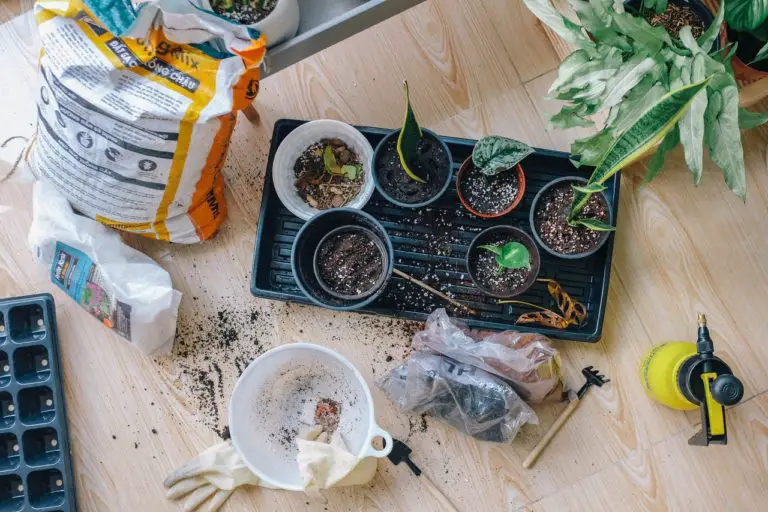
Repotting
Although Sansevieria is a glow growing species, over a period of time, you may find that your snake plant has outgrown its container. When the plant becomes too much root-bound, it exhibits stunted growth. Sometimes, the leaves on the outer side start cracking or turning yellow. Repotting the plant not only makes it look neat and tidy, it also allows more air to get to the root system. It can make the plant stronger by encouraging a healthy root growth.
Generally speaking, snake plants need to be repotted every 2-3 years. Even though you can transplant your Mother-in-law’s tongue any time of the year, spring and early summer are good seasons to do so. This time is a growing period for snake plants and they can recover quickly from the transplant shock. An added advantage is you can divide the plant or replace the potting mix at the same time.
Here is an in-depth guide on repotting your snake plant. These are some basic steps for doing the same:
- Make sure to get a pot that is proportional to the plant size. Usually it should be 1 to 1.5 inches wider in diameter than the current container. Wash the old pot thoroughly if you are planning to reuse it for another plant (or for new snake plants after dividing the roots).
- Add a thin layer of pebbles or rocks at the bottom of the pot to cover drainage holes, so the soil doesn’t fall through. You can also use a mesh to cover the holes. Then put a layer of soil over that.
- Carefully remove your plant from its current pot and shake off old, sticky soil from the roots. Watering the soil will make it easier to remove the plant.
- Now cut off any dark, mushy or damaged parts of the root using a clean knife or pruning shears. Remove old leaves as well.
- Place the root ball in a new pot. Then fill the rest of the container with fresh potting mix. Plant it at the same height as before. Don’t bury the leaves in the soil. Don’t overfill the container. Let the soil level be at least 1 inch below the rim of the pot.
- Finally, water the plant thoroughly and let the excess water drain off.
Pest Infestation and Treatment
Fortunately, snake plants are typically free from serious diseases and pest problems. Because of its hardy nature and strong succulent leaves, mother-in-law’s tongue is not an easy target for bugs. If any pest would ever bother your Sansevieria, it will most probably be either mealybugs, thrips or spider mites. Most of the pests can easily be controlled, and the plant can be saved. Early detection is key to prevent major infestation.
To treat a mealybug or spider mite infestation, the first step is to manually remove the insects. Both these bugs are sap-sucking insects that attack the leaves. Small level, local infections can be controlled by wiping off the affected area with rubbing alcohol. For medium scale infection, remove the plant from its pot, and wash it thoroughly with clean water. Insecticides can also be helpful for quick and sure removal. If the issue is too severe, you must dispose of the plant completely.
It’s a good idea to inspect your plant occasionally for the signs of infection. Check this post to know the symptoms and treatments for snake plants infested by common insects and fungal problems.

Treating and Preventing Diseases
Apart from pest infestations, snake plants tend to get sick and look unhealthy due to some common diseases. The symptoms may include browning of leaf tips and edges, yellowing of leaves, root rot, funky smell or droopy leaves. The main reasons behind these signs are improper watering, cold damage and sudden change in lighting.
Overwatering seems to be the most common enemy of snake plants. It can lead to yellowish, mushy leaves and root rot. On the other hand, dehydration can cause dry, brown tips on the leaves. Some Sansevieria varieties are more prone to collect water on the crown, which causes problems. Especially, water staying on the inner young leaves results in bacteria growth and fungal infestations.
Cold damage may injure or kill the snake plant. The leaves develop scars if placed in freezing temperatures for too long. Too much direct sunlight can suddenly change the leaf color. If you wish to move your snake plant to a bright area, do it gradually over the period of a few weeks. Plants kept in deep dark rooms may also experience leaf discoloration and eventually die.
The best treatment for any plant disease is to fix the underlying problem. Look out for signs of distress to spot any disease early on.
Propagating
Mother-in-law’s tongue plants rarely flower, so it’s difficult to reproduce them by seeds. Vegetative propagation using the roots, rhizomes and leaves is the best way for creating new plants.
A quick and reliable method for propagating snake plants is division, because they have a strong and rapidly growing rhizome and root structure.
- For diving and rooting a plant, you’ll need a sizable mature plant that has well established roots.
- Look for natural divisions in the plant when deciding where to cut. Make sure that each section has some healthy leaves and rhizomes. Depending on root-ball size, you can make two or more plants.
- Cut the roots using a clean and sterilized knife or shears.
- Then repot them in their separate containers and pour some water.
A popular way of propagating small plants is to root parts of a leaf. You can also propagate snake plant in water using leaf cuttings. However, using leaves doesn’t guarantee that the new plants will look the same as the mother plant. They may revert back to the original leaf pattern of natural species. For instance, Sansevieria Laurentii may lose the yellow stripes and turn into Sansevieria Trifasciata Prain. Here’s how you can create baby plants from just leaf cuttings:
- Cut off a mature and healthy leaf from its base. Make at least 2-3 inches long sections from it. You can choose to keep the areas of the cuts dry and let it callous before transplanting it.
- Now, take a shallow container and plant the sections bottom side down in a well-draining potting mix. The leaf cuttings should be buried at least 1 inch deep in the soil.
- Place the container in medium light or indirect sunlight. After a couple of months, the cuttings will develop 1-2 inches long roots and can be transplanted to separate pots.
Grooming
Mother-in-law’s tongue is known to be a pretty low-maintenance plant. Although it’s said that this plant thrives when left on its own, it doesn’t mean you should completely ignore it. It’s a good idea to regularly check the plant for signs of disease, which usually means damaged leaves. You might need to remove yellow, dried out or droopy leaves. Some leaves will naturally die, and those need to be trimmed as well.
Apart from pruning the leaves once in a while, there is nothing much grooming to do. But if your plant has grown a lot, you may need to take some action. You can divide it from the roots and create new plants, or repot it into a bigger container.
Pets and Kids Safety
Snake plants are mildly toxic to humans as well as animals. They can cause some oral and gastrointestinal problems when ingested. So, be cautious and keep them away from your children and pets.
Generally, due to its bitter taste, your cat or dog may not want to chew on the plant again. Even if they do, the consumption is less likely to be fatal. Chewing on the plant leaves can make the mouth and throat swell. Nausea, diarrhea, drooling, stomach pain and vomiting are some of the possible issues if consumed in large quantities.
The leaf juice of Sansevieria is believed to have some medicinal uses. However, it may cause irritation, skin rashes and dermatitis in some people. To be on the safe side, it’s better to avoid direct contact whenever possible. Use gloves if you are repotting or trimming the snake plant. Wash your hands after coming in contact with cut parts of the leaves.

Uses of Snake Plants
- Snake plants make great indoor ornamental plants. Some varieties can also be grown outside as a ground-cover and for edging. It is a drought resistant species, so it’s suitable for xeriscaping. You can keep small snake plants in dish gardens, on tables, or give them as gifts. Tall upright foliage of this plant can easily fit in small corners of your house or office.
- Apart from its stunning looks, mother-in-law’s tongue is a very hardy and tolerant plant. It can sustain temperature fluctuations and low light conditions. It’s generally a hard-to-kill plant which is great for beginners and lazy gardeners.
- In addition to these benefits, Sansevieria has the ability to absorb carbon dioxide and release oxygen at night time. This amazing feature makes this plant a erfect pick for bedrooms.
- Snake plants also decrease the impact of airborne allergens by absorbing harmful toxins from the air. They are effective in removing formaldehyde from indoor spaces.
- Another great benefit of the snake plant is, it is believed to be a lucky plant as per Feng Shui. This auspicious plant will bring good fortune and protect you from negative energies.

